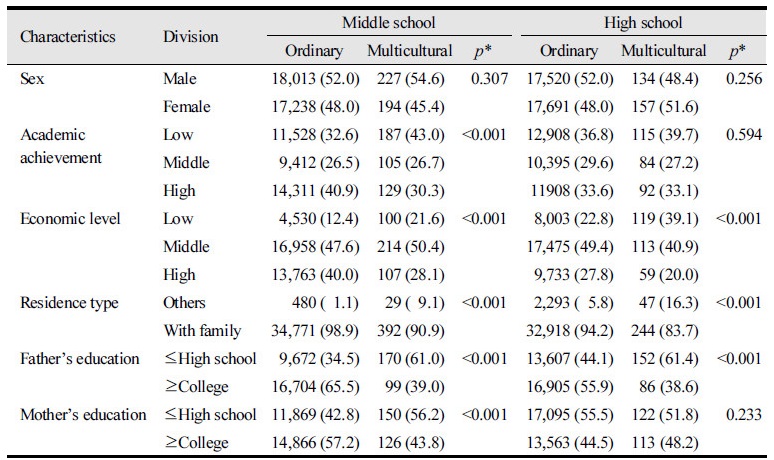Abstract
The purpose of this study was to compare oral symptoms in middle school and high school students of multicultural and ordinary families in Korea. Methods: We used data from the web-based survey of the National 2014 Korean Youth Risk Behavior of Korean Center for Disease Control. A total of 71,174 subjects responded about their father or mother’s Korean nationality. We classified a subject as an adolescent of a multicultural family if aparticipant’s father or mother’s nationality was not Korean. Data was analyzed using SPSS Ver. 19.0. High school students of multicultural families have experienced more oral disease symptoms, compared to high school students of ordinary families. After adjusting general characteristics and oral health behaviors, high school students of multicultural families experienced 1.78 times higher frequency of oral disease symptoms compared to high school students of ordinary families. The family type and age characteristics of adolescents should be considered when establishing policies and institutions targeting adolescents to improve oral health.
Figures & Tables

Table 1. Family type and general characteristics


